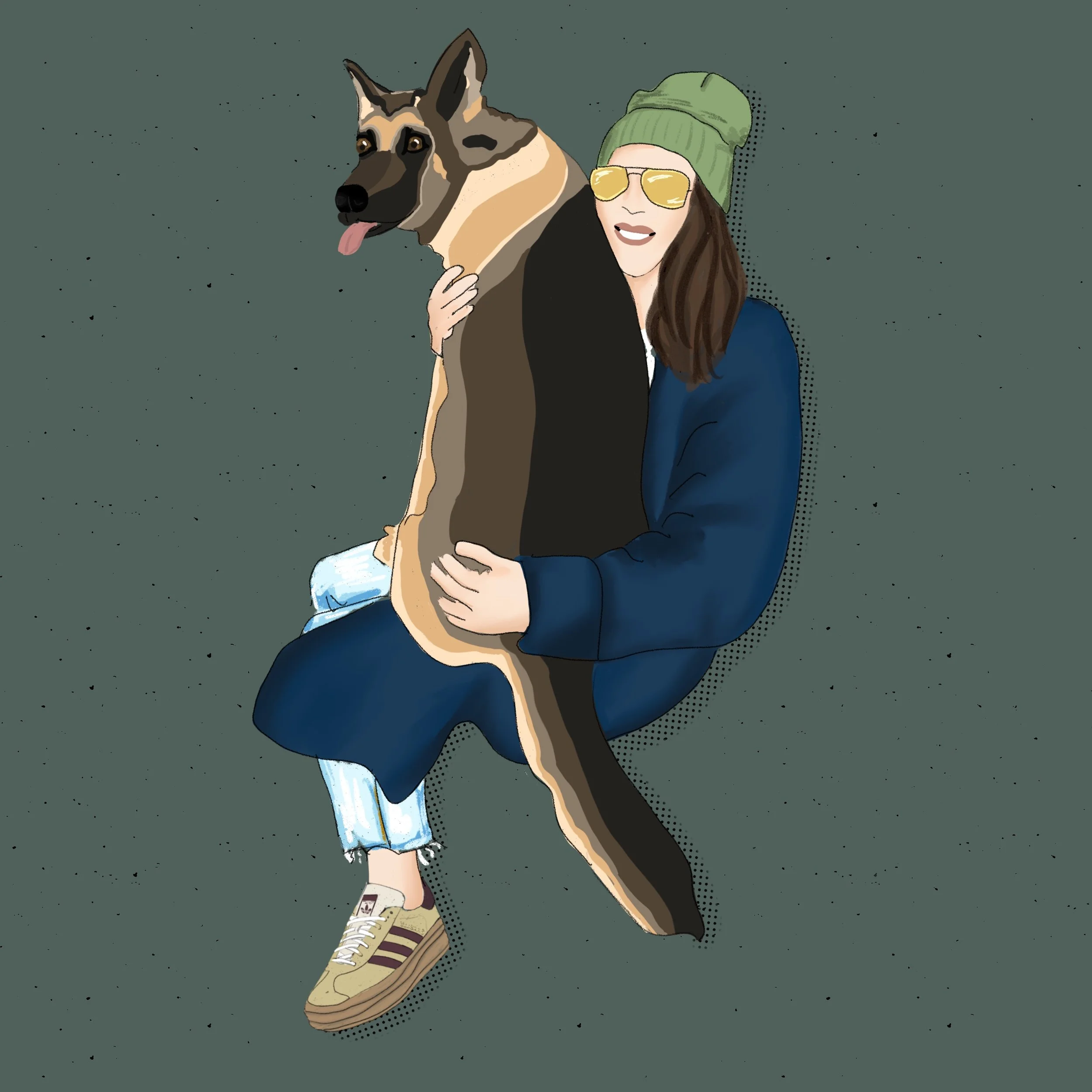How to Travel by Train with a Large Dog in Europe
It’s no secret that our German Shepherd, Rhaegar, is like a child to us. We love him dearly and try to include him in as many activities as possible. Living in Malmö, we often bring him along when we visit bars and restaurants. He’s so accustomed to joining us that he instinctively knows his place is under the table, where he promptly makes himself comfortable. Last year, we took him on a trip to Rügen, Germany, where he enjoyed a short 30-minute train ride and a ferry trip. This year, we decided to take on a more ambitious journey—a 6-hour train ride to Hamburg, Germany. In general, traveling with pets in Europe is quite manageable. The key is to plan ahead and know what needs to be done to ensure the trip is enjoyable for everyone.
Research Pet Regulations
While the EU has general guidelines for traveling with pets, specific requirements can vary from country to country. It’s crucial to review the restrictions and requirements for all the countries you plan to visit or pass through. Some countries may have specific vaccination requirements, while others might impose different travel restrictions.
Health and Documentation
All dogs in the EU are issued a pet passport by a veterinarian, which documents all their vaccinations and certifies their health. If you don’t live in the EU but plan to travel with your dog, you will need a health certificate signed by an approved vet, typically within 10 days of travel. Certain countries require specific vaccinations before your visit, so be sure to check your destination’s requirements or consult with your vet.
Where to stay that’s pet friendly
Nowadays, many hotels are pet-friendly, but I prefer staying at an Airbnb. This option offers more flexibility with location, a kitchen, and proximity to parks or outdoor spaces where you can enjoy time with your dog.
Bring Fido is a great resource for locating pet-friendly hotels.
If luxury is your preference, you can find stunning pet-friendly locations here
Marriott family hotels often allow dogs and have amenities like dog beds and special menus.
If you’re looking at Airbnb, make sure to filter results to show only dog-friendly options. It’s also important to message the owner before booking to confirm that your dog is allowed. We’ve found that while some places say they allow dogs, they may have size restrictions, typically under 20 kg. Conversely, some places may not mention dogs in their listing but will allow them if you ask. Note that there is usually an extra cleaning fee or surcharge for bringing a dog—this is normal.
When choosing a location, I like to ensure its close to an area where I can walk the dog. Not all parks allow dogs, so make sure to do your research! I also like to see if the city we are visiting has any dog parks or areas recommended for dogs.
Train booking and transport
Most EU countries have similar policies for dogs on trains—small dogs should be crated, while large dogs must be on a leash and sometimes muzzled. This site is helpful for finding regulations on pet travel, as some countries have unique restrictions. For example, in Italy, dogs are not allowed on trains during peak hours (7:00-9:00 AM) on weekdays.
This site provides links to every train operator in Europe, where you review specific requirements, such as whether you need to purchase a child ticket for your dog or if there’s a special car you need to ride in. When we traveled with Rhaegar to Hamburg, we purchased a child ticket for him, but some train operators offer a specific pet ticket.
When booking your seats, I like to book a table with two seats on either side. This arrangement provides a space for your dog to lie down, clear of the main aisle. If you’re taking an overnight train, you’ll need to book the entire carriage for your party to allow you dog in the car with you. Typically, you cannot travel first class with a dog.
We pack a backpack that is strictly for the dog. Included in this backpack are:
Wet wipes, spray disinfectant, and paper towels in case of accidents
Portable food containers - we have these
Dry kibble
Treats
Poop bags
Water bottle for dogs - we like this one
Blanket for dog to lie down on - this helps them identify their space and is also more comfortable
Any medications, if needed - when we took the ferry to Rügen, we asked our vet for motion sickness medicine in case we needed it.
Pet Passport or health documents
Before boarding the train, we make sure to take a long walk to tire our dog out a bit. This also ensures he empties his bladder, helping him stay comfortable during the journey without needing a stop.
Some train operators ask that you wait to board last, allowing everyone else to settle first. If you know this ahead of time, it’s best not to arrive at the train station too early, so your dog isn’t waiting around and potentially getting anxious.
If your dog isn’t used to crowded or public spaces, I highly recommend socializing them before attempting public transportation. We regularly take Rhaegar to restaurants, bars, festivals, and crowded spaces to get him comfortable around large groups of people. This also gives us an opportunity to train his behavior. We’ve also taken him on short train rides to familiarize him with the movement, getting on and off, and expected behavior. This preparation helped immensely. When we made the trip to Hamburg, he was excited to board the train and behaved perfectly
Conclusion
Traveling by train in Europe with a large dog is relatively easy but requires careful planning and research.
Ensure your dog is socialized and comfortable in crowded spaces before attempting longer journeys.
Reward your dog often for their good behavior so they understand what is expected of them.
Enjoy the adventure!


